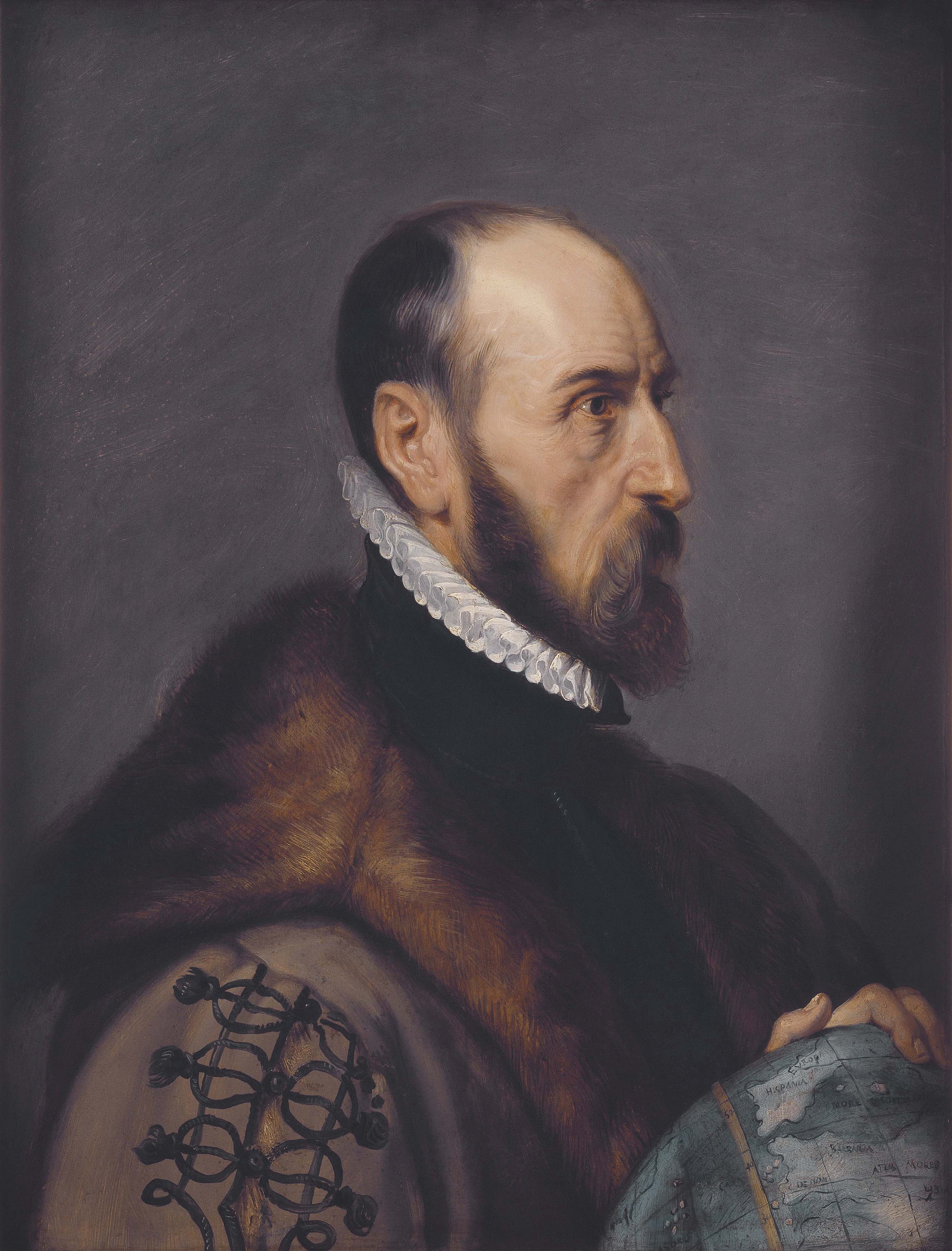Abraham Ortelius
1527–1598
PatronScholar
Abraham Ortelius, sixteenth century cartographer and geographer, was orphaned at the age of twelve and was raised by his uncle, Jacob van Meteren, in Antwerp. While later in life his craft drew him to various important European cities, it was during Ortelius’ time in Antwerp as an apprentice to a map engraver that he established relationships with the artists he later patronized. In 1547 he joined the artists’ Guild of St. Luke, through which he connected with Marten de Vos, Joris Hoefnagel, Lucas d’Heere, Frans Hogenberg, Philips Galle, and Pieter Bruegel.
Ortelius’ close friendship with Bruegel is attested perhaps most clearly by two artifacts created after the artist’s death in 1569: an epitaph, and an engraving. The former, written around 1573 in Ortelius’ Album Amicorum, conveys both his personal relationship with Bruegel, and his opinion of Bruegel as “the most perfect painter of the century.” Ortelius furthered the secondary purpose of the epitaph—to commemorate Bruegel’s artistic brilliance—by commissioning an engraving from Philips Galle of a grisaille Bruegel had painted for Ortelius in 1564. He sent copies of this engraving to Dirck Volckertsz Coornhert and Benedictus Arias Montanus, the latter of whom quickly recognized the print as a version of the very grisaille--Bruegel’s The Death of the Virgin. Though little is known about the circumstances in which Bruegel painted this grisaille for Ortelius, their close friendship seems a likely explanation. The year after Bruegel’s death, 1570, Ortelius published what became his best-known work Theatrum Orbis Terrarum: a compendium of maps from various sources created with the purpose of expanding the human understanding of world geography. Ortelius died in 1598 in Antwerp.
By Cecily Manson
